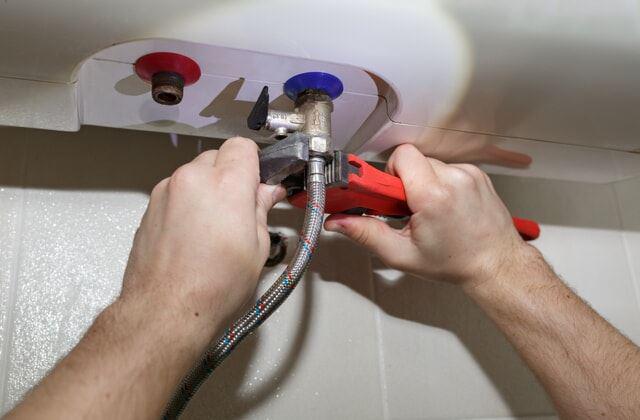Tips on How to Keep Your Home's Hot Water System Functioning Well
Tips on How to Keep Your Home's Hot Water System Functioning Well
Blog Article
Right here below you can get a good deal of good expertise about How to Maintain a Hot Water Heater in a Few Simple Steps.

Warm water is necessary for day-to-day comfort, whether it's for a refreshing shower or washing recipes. To guarantee your warm water system runs successfully and lasts much longer, routine maintenance is key. This short article gives functional ideas and insights on exactly how to preserve your home's warm water system to avoid interruptions and expensive fixings.
Introduction
Keeping your home's hot water system could seem difficult, but with a couple of straightforward steps, you can guarantee it operates smoothly for several years to come. This guide covers whatever from understanding your hot water system to DIY maintenance suggestions and understanding when to employ expert assistance.
Relevance of Maintaining Your Warm Water System
Regular upkeep not just expands the life-span of your warm water system but also ensures it operates effectively. Neglecting upkeep can cause reduced efficiency, greater energy costs, and even premature failing of the system.
Signs Your Warm Water System Needs Maintenance
Understanding when your hot water system needs interest can protect against significant issues. Watch out for indicators such as irregular water temperature, odd noises from the heater, or rustic water.
Comprehending Your Hot Water System
Prior to diving right into upkeep tasks, it's practical to comprehend the fundamental parts of your hot water system. Commonly, this includes the water heater itself, pipes, anode rods, and temperature controls.
Month-to-month Maintenance Tasks
Normal month-to-month checks can help capture small problems before they rise.
Purging the Hot Water Heater
Purging your water heater removes sediment buildup, enhancing performance and extending its life.
Checking and Changing Anode Rods
Anode rods avoid deterioration inside the storage tank. Checking and replacing them when worn out is vital.
Examining and Adjusting Temperature Level Settings
Changing the temperature level settings guarantees optimum efficiency and safety.
Do It Yourself Tips for Maintenance
You can do a number of upkeep jobs on your own to maintain your warm water system in top condition.
Checking for Leaks
Frequently check pipes and connections for leaks, as these can result in water damage and greater expenses.
Checking Pressure Relief Valves
Examining the stress relief valve ensures it operates properly and prevents excessive stress accumulation.
Shielding Pipes
Shielding warm water pipes lowers heat loss and can save power.
When to Call a Specialist
While do it yourself maintenance is useful, some issues need professional experience.
Facility Problems Calling For Expert Help
Instances include significant leakages, electric issues, or if your water heater is regularly underperforming.
Regular Specialist Upkeep Benefits
Specialist upkeep can consist of extensive examinations, tune-ups, and making certain conformity with security standards.
Verdict
Routine maintenance of your home's hot water system is crucial for efficiency, longevity, and cost financial savings. By complying with these pointers and recognizing when to look for specialist aid, you can ensure a dependable supply of hot water without unforeseen interruptions.
How to Maintain an Instant Hot Water Heater
Before tinkering with your hot water heater, make sure that it’s not powered on. You also have to turn off the main circuit breaker and shut off the main gas line to prevent accidents. Also turn off the water valves connected to your unit to prevent water from flowing into and out of the appliance. 2. When you’re done, you have to detach the purge valves’ caps. These look like the letter “T†and are situated on either side of the water valves. Doing so will release any pressure that has accumulated inside the valves while at the same time avoid hot water from shooting out and burning your skin. 3. When the purge valves’ caps are removed, you have to connect your hosing lines to the valves. Your unit should have come with three hoses but if it didn’t, you can purchase these things from any hardware or home repair shops. You can also get them from retail stores that sell water heating systems. Read the user’s manual and follow it to complete this task properly. When the hosing lines are connected, open the purge port’s valves. 4. You should never use harsh chemical cleaners or solutions when cleaning your unit. Make use of white vinegar instead. It should be undiluted and you’ll probably use about 2 gallons. 5. Now flush your water heater. This task should probably take about 40 minutes. We can’t give you specific directions for this because the procedure is carried out depending on the type, model and brand of your heater. With that being said, refer to the user’s manual. 6. When you’re done draining the unit, you have to turn off the purge port valves again. Remove the hosing lines that you earlier installed on each of the water valves. Put the valve caps (purge port) back in their respective places and be very careful so as not to damage the rubber discs that are found inside these caps. 7. Now that everything’s back in place, check your user’s manual again to find out how to reactivate your water heating system. 8. Once it is working, turn one of your hot water faucets on just to let air pass through the heater’s water supply pipes. Leave the tap on until water flows smoothly out of it. https://www.orrplumbing.com/blog/2014/september/how-to-maintain-an-instant-hot-water-heater/

I was made aware of that article on How to Maintain Your Water Heater & Prolong its Life from an associate on a different blog. Liked our blog? Please share it. Help another person find it. Thank you for being here. Revisit us soon.
Call Today Report this page